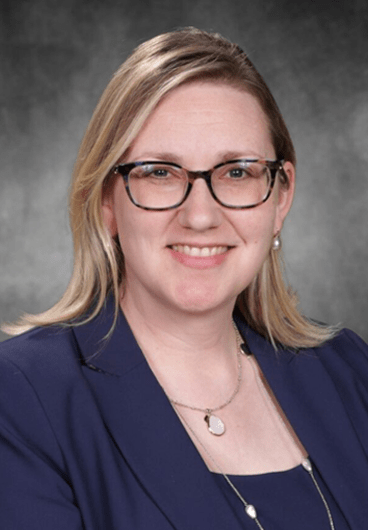
Randi Fielding
Magma Ranch K-8 School
Florence, Arizona
rfielding@fusdaz.org
Best Practices
1) Student Leadership: I have developed student leadership through three student groups I have formed.
The Principals Academy is open to fifth and sixth graders who want to develop their servant leadership skills. This dedicated group of students has invested in building a school garden. It began with upcycling plastic containers and collecting seeds. It has continued with nurturing seeds indoors until ready to plant outdoors in the newly build raised garden beds. Their enthusiasm for the work is contagious. Our group doubled in size in just a few weeks. They are getting their parents, siblings, and friends involved. On a Saturday, we hosted a garden workday. Many of the Principals Academy kids came with their families. They enthusiastically rolled up their sleeves and performed manual labor for three straight hours. They are learning that servant leadership involves serving others, achieving their best, and gaining respect. While these students are growing seeds, they are also growing as leaders.
I also created a group for students in seventh and eighth grades who want to serve the school. They are the Creed Ambassadors. These students work on special projects, such as creating posters to recognize our bus drivers, and in support of schoolwide events such as our “Level Up” parties, which celebrate students who have improved their reading abilities.
The Readers Group is also a student-led group I facilitate. Students in this group are in seventh and eighth grade, and they read to and with younger students in first grade and kindergarten. They have even read the books to the students in American Sign Language. They are modeling being a strong reader and serving others.
Students who want to participate in these three student leadership groups must complete a written application signed by their parent. The students must demonstrate initiative, effective communication, and advocacy as the groups take on new life based on what the students want to do. Students are learning that they can make a positive impact on their peers and on school programs when they ask and work. By facilitating these opportunities for student leadership, I’m also growing as a leader. Working directly with students brings me joy and keeps me grounded with authentic connections. This reinforces my purpose for service to my school. When I serve others, I develop leaders.
2) Turnaround Leadership: Our vision is “Reading Is a Human Right.” Several initiatives are in place to ensure that our vision is realized and that a positive school culture is the driving force to turnaround our school:
- Valuing Our Kids: Hold your hands in front of you with your thumbs touching. Now bring your fingertips together to form a heart. Now say “our kids.” If you have a friend sitting nearby, take one hand and connect it with theirs so two halves of the hearts make a whole. Now say together, “our kids.” I have led this activity many times in meetings. Every time, it brings smiles. As a school staff, we bring our hands and hearts together for our kids. All our kids are great kids. Unfortunately, that statement wasn’t a shared belief in the community when our new administration team was appointed to turn around our school two years ago. Many parents and former staff members talked about ‘good kids’ and ‘bad kids.’ Our leadership team put a stop to his harmful rhetoric. By continually emphasizing the value of each of our students and setting an example of commitment to each child, our school culture is changing. Our school is becoming a school where students feel safe and wanted. It is a school where teachers make regular personal phone calls to all parents. It is a school where the highest expectations for professional conduct are upheld and our whole reason for coming to work everyday is to serve our kids.
- A Well-Designed Master Schedule: Our master schedule ensures that all students receive core instruction in their general ed classrooms. Pull-out blocks for ELL, special education, and Tier 3 reading intervention are designated for specific times so no student misses core instruction. Additionally, multiple reading blocks in Kinder through 3rd grade are designated for specific reading curricula and interventions, such as Fundations, Walk to Read, Wit & Wisdom, and 95 Percent Group. These designated blocks ensure all students have equitable access to Tier 1 and Tier 2 instruction, especially for students who receive Tier 3 instruction.
- Schoolwide Tier 2 Reading Intervention: We have an all-hands-on-deck approach to reading intervention during the first 30 minutes of the school day. To manage this complex intervention, our leadership team works closely with our reading specialist to adjust the system as it grows. For this intervention, all students are screened and placed in a “just right” group. For a three-week cycle, students are taught specific decoding skills, such as open and closed syllables, silent -e patterns, blends, etc. All teachers, including special area teachers, and paraprofessionals teach a group, keeping the group sizes small. After the three-week cycle, students are rescreened to see if they have leveled-up (mastered the skill). They are then invited to attend a level-up party where they get a special treat (root beer floats or ice cream sundaes) and dance with the principal. By providing this schoolwide Tier 2 reading intervention with incentives, all students are able to make significant gains in their reading.


